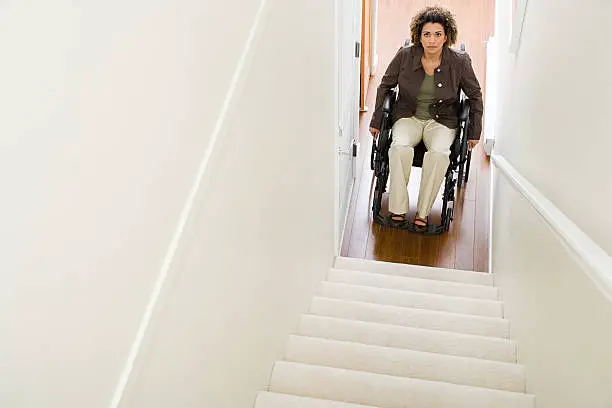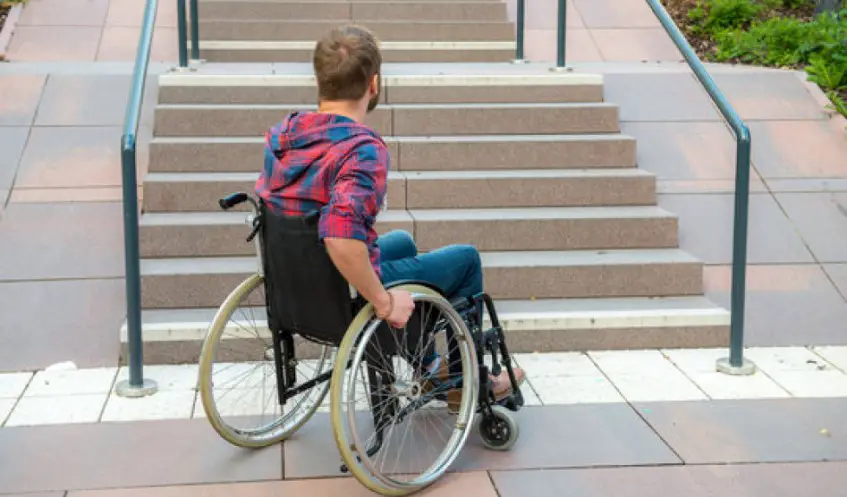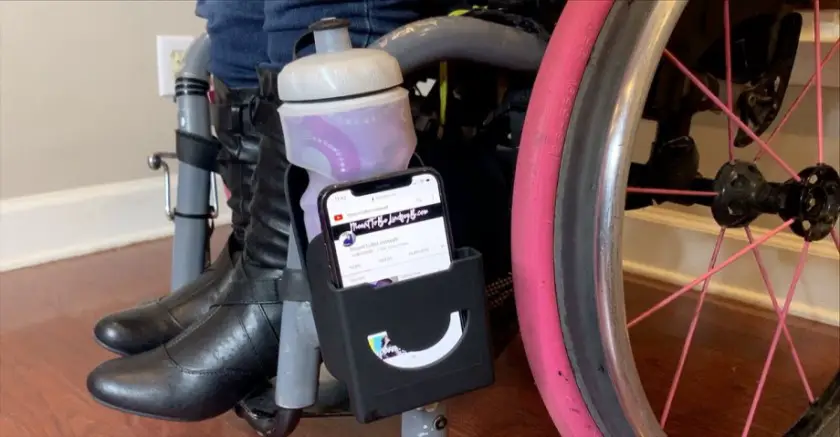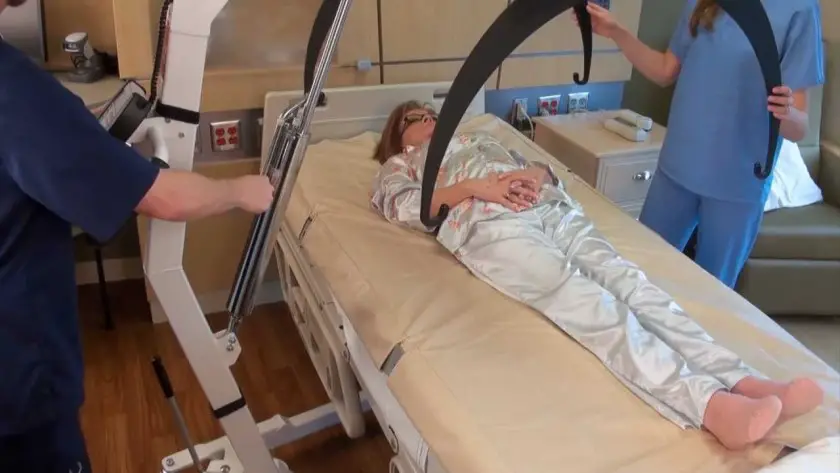A flight of stairs is a barrier and heart-breaking sight for a disabled person.
But it is necessary to get to the upper part of a building, especially if there is no elevator or wheelchair ramp within the building premises.
The burden of getting up the stairs lays heavily on the disabled person and the caregiver in charge as it is never convenient for both of them.
The good news is that there is a solution for everything if it is sought properly and executed with patience and some calculations. Below are some excellent tips to help you get a disabled person up the stairs safely.
Table of Contents
- Tips to Carry a Disabled Person Upstairs
- If there are more than two persons
- If a very strong person is available
- If you are not a caretaker but simply offering help to the disabled
- If the disabled can stand, then use the walking method by following these steps
- How to Get a Disabled Person Upstairs (Video)
Tips to Carry a Disabled Person Upstairs
If you are just two persons
Ensure you’re with someone that can assist you strength-wise. The person holding the wheelchair arm should position themselves at the first case of the stairs. You should lock the wheelchair brakes to enable stillness and easy lifting.
The other person should help by lifting the lower part of the chair while the person at the chair’s arm lifts it, making it easier on both parties.
Please note that the strong person should control the wheelchair arm lifting as it is not easy lifting a wheelchair and the persons’ weight simultaneously.
Recommended: How to Get a Wheelchair-Bound Person into a Car (Complete Guide)
Conveniently follow these particular steps if you’re inexperienced with doing this
Buckle up the disabled person into the chair, ensuring their feet are stationed appropriately on the footrest for safety.

Position the chair by wheeling it towards the lowest step and pressing the wheels tightly against it. Position yourself directly above the lowest step, which you have rested the wheels of the chair against
From the position you have taken, hold the wheelchair handles tightly, so they don’t loosen or slip off your hands when carrying. Then arch your back, bend your knees, and put a foot on the step directly above where you have positioned yourself.
Instruct the other person helping you also to arch their back and bend their knees in front of the wheelchair. Then tell them to hold on, tightly, to the frame just above the chair’s wheels.
You should then tilt the chair back slowly until it is balanced on one wheel. Continue by lifting the chair upwards and using the wheel to help pull it up. It would be great if the disabled help you turn the wheel backward if they can.
Continue to lift the chair until it rests on the next wheel while repositioning yourself after each lift that you make until you reach the top of the staircase.
Let the chair remain tilted while pushing it a few feet back and position the front wheels down once sure it is safe.
However, if you think getting the disabled upstairs without the chair will be more convenient for you, then speak to the disabled first because lifting them off the chair. Carrying them should be the last option, as you will see later.
If there are more than two persons
The disabled can be lifted from the chair and carried by the arms and legs by three persons, while another folds the chair and follow behind. This way will get the disabled up the stairs faster.
If a very strong person is available
The very strong person could carry the disabled up the stairs while the other person brings the chair behind. Once they get up the stairs, the person puts the disabled back on the chair, or whatever form of convenience they have to get into (like the bed).
Recommended: List of Where to Sell Wheelchairs
If you are not a caretaker but simply offering help to the disabled

When offering to help a disabled person, you should prepare your mind to adhere to some safety measures. Disabled people find it physically and emotionally uncomfortable to be carried off their chairs across a barrier.
At the same time, if they have to crawl across a barrier, they feel a loss of their dignity; carrying them should be the last option.
Therefore, lifting requires:
a good understanding of the safe techniques to protect yourself and the disabled, especially if they need specific support with certain areas of their bodies;
defying language barriers for easier communication of the safety tips when helping to lift the disabled;
taking directions from the disabled person about their specific needs before transferring them.
Recommended: Can a Disabled Person Get a Gun Permit? (Answered)
If the disabled can stand, then use the walking method by following these steps
Get a safety belt and wrap it around the disabled person’s waist. Ensure it is fixed tightly and comfortably (so they can breathe easily).
Then position yourself at the bottom of the stairs and hold on to the safety belt with one hand. Tell the disabled individual to place their hand on the stairs handrail.
Next, take them up the first step, then stand behind them directly one step below. Continue by telling them to take the next step with their strongest leg.
While they are doing so, hold on to the safety belt tightly to balance or catch them if they are about to fall.
Move the same side leg to the step above you and instruct them to move their next leg to the next step while you move up directly to the step beneath them.
You should hold on to the hand railing with your free hand while doing this.
You should go on with this process, one step after the other, and take rests when you deem it fit to do so.
Remember never to let go of the safety belt and the hand railings as the disabled move up. Just in case you have to come back downstairs, you should leave the safety belt on when you reach the top of the staircase.
Check Out Related Posts
- 3 Reasons Why Sign Language Interpreters Make Faces
- How to Transfer a Bilateral Amputee (Step-by-Step Guide)
- Can You Drive After Right Leg Amputation? (Answered)
- Can a Hamster Be a Service Animal? (Answered)
- Can a Chicken Be a Service Animal? (Answered)
- How an Amputee Takes a Shower (Ultimate Guide)



